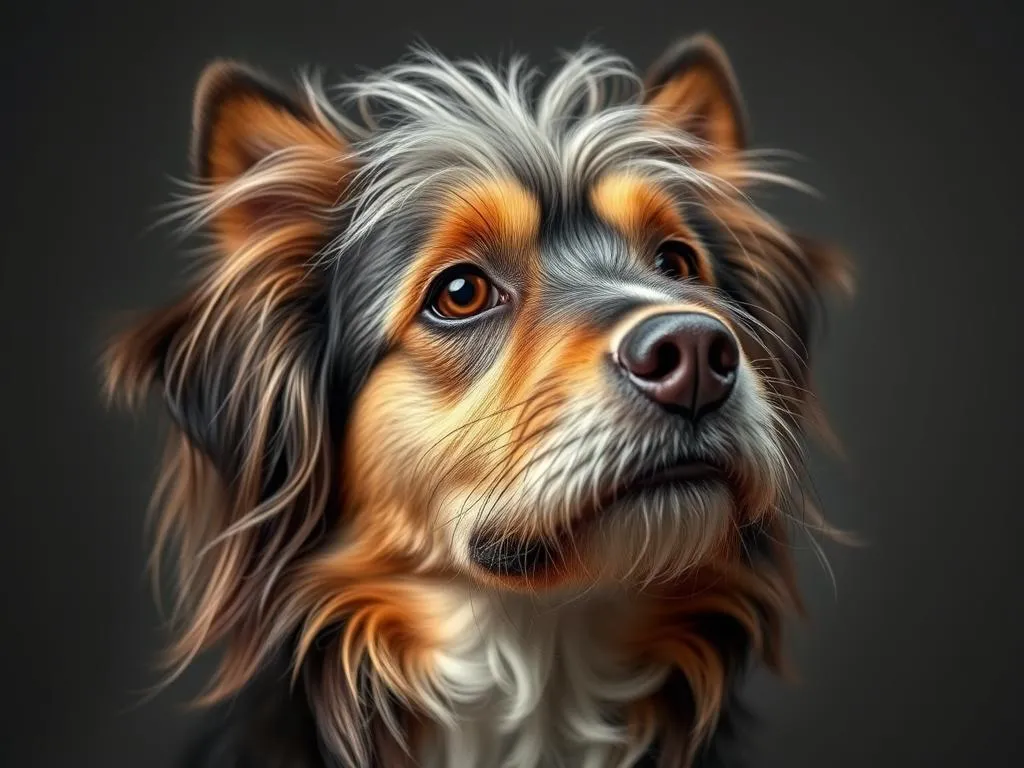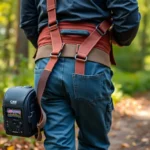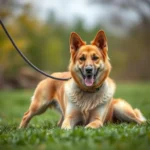
Understanding why dogs’ hair stands up is a fascinating aspect of canine behavior that reveals a lot about our furry friends. As dog owners, recognizing the signals our pets send can help us respond appropriately to their emotional and physical states. So, why do dogs’ hair stand up? This article dives deep into this phenomenon, exploring its causes and implications.
Understanding Canine Hair Structure
Anatomy of Dog Hair
Dogs have a unique hair structure made up of two primary types: guard hairs and the undercoat. The guard hairs are the longer, coarser outer hairs that protect against the elements and add to the dog’s overall appearance. The undercoat consists of soft, dense hairs that provide insulation and warmth.
This combination of hair types plays a crucial role in a dog’s health and well-being. Not only does it help regulate body temperature, but it also provides protection from environmental factors such as sun exposure and moisture.
The Role of Hair in Communication
A dog’s fur is not just there for protection; it also serves as a means of communication. When a dog feels threatened, excited, or anxious, tiny muscles at the base of each hair follicle contract, causing the hair to stand up. This process is known as piloerection and is an instinctive response that can indicate a dog’s emotional state.
Understanding this response helps dog owners recognize when their pet is feeling uneasy or excited, giving them the information needed to respond appropriately.
Reasons for Hair Standing Up
Fear or Anxiety
One of the most common reasons for raised hair is fear or anxiety. When a dog feels threatened, whether by a sudden noise, an unfamiliar animal, or a stressful situation, its body reacts by raising its hair as a defensive mechanism. This response makes the dog appear larger and more intimidating to potential threats.
For instance, during a thunderstorm or fireworks, many dogs exhibit raised fur due to anxiety. Recognizing this behavior as a sign of fear can help owners provide comfort and reassurance to their pets.
Aggression or Threat Perception
Raised fur can also indicate aggression. When a dog perceives a threat, whether from another dog or a person, it may raise its hair to signal that it is ready to defend itself. This behavior is often accompanied by other body language indicators, such as growling, bared teeth, or a stiff body posture.
Understanding these signs is crucial for dog owners, as it can prevent potentially dangerous situations. Being aware of a dog’s emotional state can help owners intervene before aggression escalates.
Excitement or Playfulness
Interestingly, raised hair is not always a sign of fear or aggression. Dogs may also raise their hair during moments of excitement or playfulness. For example, a dog might exhibit this behavior when greeting a familiar friend or during a spirited game of fetch.
This contrasts with fear and aggression, as an excited dog typically has a relaxed body posture, wagging tail, and playful demeanor. Recognizing the context of the behavior is essential for accurately interpreting a dog’s emotional state.
Temperature Regulation
Another reason why dogs’ hair stands up is related to temperature regulation. In colder weather, a dog’s hair may rise to trap air and provide insulation, helping to keep the dog warm. Certain breeds, particularly those with thick double coats, are more prone to this behavior as part of their natural survival instincts.
This physiological response is essential for dogs that spend time outdoors in varying weather conditions. Understanding this aspect can help owners ensure their pets are comfortable and protected from extreme temperatures.
Signs to Look For
Body Language Indicators
When observing a dog with raised hair, it’s essential to pay attention to other body language signals. Indicators such as tail position, ear posture, and facial expressions can provide valuable context for understanding the dog’s emotional state. For example:
- Tail Position: A wagging tail can indicate excitement, while a stiff, raised tail may suggest aggression.
- Ear Posture: Ears perked up and forward often signal alertness, whereas flattened ears indicate fear or submission.
- Facial Expressions: A relaxed face with a slightly open mouth suggests contentment, while tense facial muscles can indicate stress or aggression.
Contextual Clues
Environmental factors can also play a significant role in a dog’s behavior. Situations such as encountering unfamiliar people or animals, being in crowded spaces, or hearing loud noises can trigger a dog’s hair to stand up.
Being aware of the surrounding context is crucial for dog owners. Understanding what may have caused the reaction can help in managing the situation effectively and ensuring the dog feels secure.
What to Do When You Notice This Behavior
Assessing the Situation
When you notice your dog’s hair standing up, the first step is to assess the situation. Try to determine whether the response is due to fear, aggression, or excitement. Observing the context and accompanying body language can provide insights into your dog’s emotional state.
If the hair is raised alongside signs of fear, such as a tucked tail or cowering posture, it’s essential to provide reassurance. Conversely, if the dog displays aggression, it may be necessary to create distance from the perceived threat.
Training and Behavior Modification
Training plays a vital role in addressing fear or aggression in dogs. Positive reinforcement techniques can help build confidence in fearful dogs. For instance, rewarding calm behavior in stressful situations can encourage dogs to remain relaxed.
For aggressive dogs, it’s crucial to work on desensitization techniques. Gradually exposing them to the source of their fear in a controlled manner can help them learn to cope with their emotions.
Seeking Professional Help
If your dog frequently exhibits raised hair and you’re unsure of the cause, it may be time to consult a veterinarian or a professional dog trainer. They can provide guidance on behavior modification techniques and assess any underlying health issues that may contribute to stress.
Frequent or extreme piloerection can signal anxiety disorders or other health concerns, making professional intervention crucial.
Preventing Negative Outcomes
Socialization
Proper socialization is essential for puppies and adult dogs alike. Exposing dogs to various environments, people, and other animals can help them develop confidence and reduce anxiety. Regular socialization helps dogs learn how to respond appropriately to different situations, minimizing the chances of fear-based reactions.
Creating a Safe Environment
Creating a safe and secure environment for your dog can significantly reduce anxiety. Providing a designated space where your dog can retreat during stressful situations, such as thunderstorms or vet visits, can help them feel more secure. Additionally, using calming products, such as anxiety wraps or pheromone diffusers, may also provide comfort.
Regular Health Checks
Routine veterinary check-ups are vital for maintaining your dog’s overall health. These visits can help identify any underlying health issues that may contribute to anxiety or stress. Keeping an eye on your dog’s physical condition can prevent unnecessary discomfort and ensure they remain happy and healthy.
Conclusion
Understanding why dogs’ hair stand up is essential for dog owners. By recognizing the various causes of this behavior—ranging from fear and aggression to excitement and temperature regulation—owners can better respond to their dogs’ emotional and physical needs.
Observing your dog closely and considering their overall demeanor can provide valuable insights into their state of mind. With the right knowledge and techniques, you can help ensure that your furry friend feels secure, healthy, and happy.









